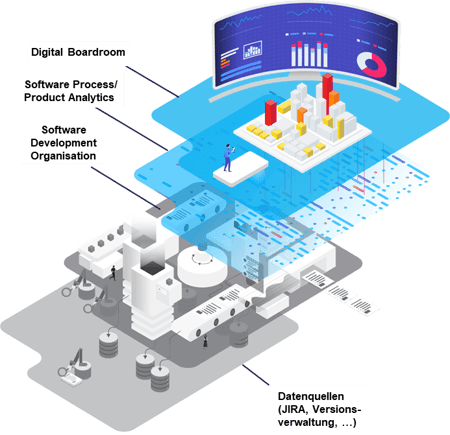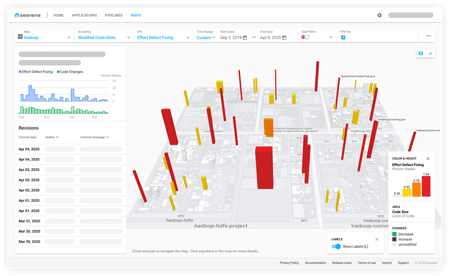
Many companies are currently experimenting with the "Scaled Agile Framework" (SAFe®): As a collection of (agile) best practices, the SAFe scaling approach promises making the long-cherished dream of a software factory a reality. But how can decision makers be sure that the chosen framework will take them to the right destination? A set of instruments for managing their software development can help companies to succeed here: Software analytics as an essential component of digital engineering. With the help of traces left in the systems by business analysts or developers, both the software development processes and the software created can be objectively monitored, controlled and optimized. Decision-makers should therefore invest into the appropriate control instruments in addition to the introduction of methodical frameworks.
 Dr. Oliver Laitenberger (expert for digitization and technology) observes: "In practice, decision-makers often lack the necessary tools to objectively track the effects and benefits of their software development using key figures and indicators." When it comes to managing their own development processes or the state of developed software products, CIOs often cannot rely on any dependable information delivered via a dashboard in "real-time" Too often, decisions involving millions of dollars are based "on gut instinct".
Dr. Oliver Laitenberger (expert for digitization and technology) observes: "In practice, decision-makers often lack the necessary tools to objectively track the effects and benefits of their software development using key figures and indicators." When it comes to managing their own development processes or the state of developed software products, CIOs often cannot rely on any dependable information delivered via a dashboard in "real-time" Too often, decisions involving millions of dollars are based "on gut instinct".  The highlight is that standard tools, such as Jira and version management systems, are used for creation, modification, and deletion. These record every change and store corresponding movement and status data in the systems. The path of each EPICS and each user story can be automatically traced, visualized, and analyzed from the business, all the way to the code and test cases in IT operations ("Software Process Analytics").
The highlight is that standard tools, such as Jira and version management systems, are used for creation, modification, and deletion. These record every change and store corresponding movement and status data in the systems. The path of each EPICS and each user story can be automatically traced, visualized, and analyzed from the business, all the way to the code and test cases in IT operations ("Software Process Analytics").No matter how you slice it: The main driver for using models like SAFe is the systematized creation of software code. Code is the only tangible "asset" and the only tangible artifact to effectively manage software development risks. Software code is stored by developers in "version control systems". This data can also be extracted, analyzed and visualized accordingly ("software product analytics").
 The results are presented in maps, diagrams and key figures. The visualization is easy to understand for all decision-makers and creates the appropriate and necessary transparency at a glance for determining the position and further navigation in digital projects – with a foundation of knowledge across all hierarchical levels of the company, from the software developer to the board of directors.
The results are presented in maps, diagrams and key figures. The visualization is easy to understand for all decision-makers and creates the appropriate and necessary transparency at a glance for determining the position and further navigation in digital projects – with a foundation of knowledge across all hierarchical levels of the company, from the software developer to the board of directors.
The visualizations enable even more complex software issues to be communicated with the business departments that often have little understanding of software issues. This leads to more collaborative work between IT teams and other business departments and more credibility of results – another core aspect of agile corporation.
If IT managers and CIOs want to shape a change to comprehensive agility along the SAFe framework, they should also deal with "software analytics" issues. If misalignments are recognized late, then no agile framework will help. Agile change on a large scale requires that superiors hand over responsibility to their employees and that development teams measure themselves against the responsibility they have been given. This is especially true in times of the "new normal" with highly decentralized forms of work. Software Analytics with its focus on "Software Process Analytics" and "Software Product Analytics" provides the appropriate tools for this. To ensure that the SAFe approach does not remain an immeasurable construct and can be implemented successfully, decision-makers should manage their software factory holistically with the help of analyzed data resources.
Authors: Dr. Uta Morgenstern, Oliver Laitenberger
Translated by: Brandon Lewis
These Stories on News
August-Bebel-Str. 26-53
14482 Potsdam, Germany
hello@seerene.com
+49 (0) 331 706 234 0
Generative AI Seerene GmbH
August-Bebel-Str. 26-53
14482 Potsdam, Germany
hello@seerene.com
+49 331 7062340